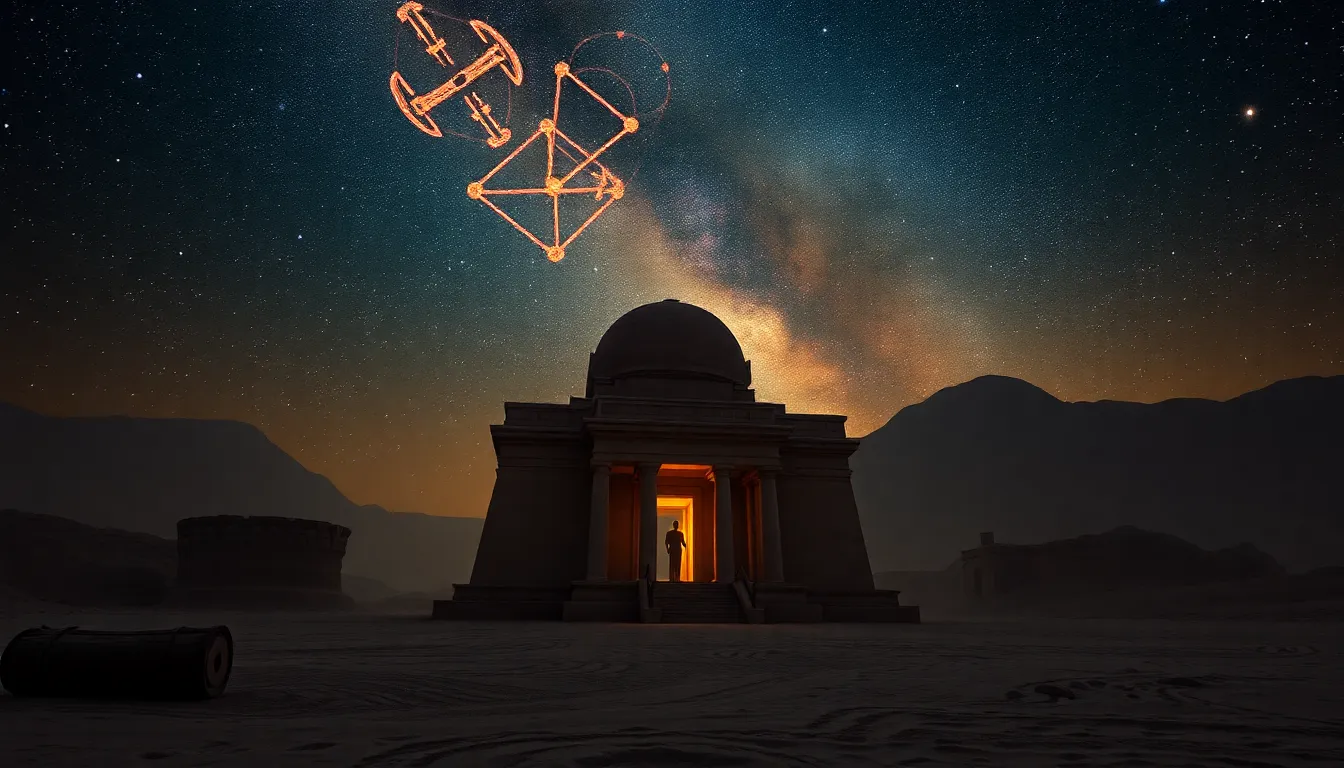The Influence of Egyptian Astronomy on Indigenous Cultures
I. Introduction
The ancient civilization of Egypt was not only known for its monumental architecture and rich mythology but also for its profound understanding of astronomy. The Egyptians meticulously observed the stars and planets, developing a sophisticated astronomical system that was integral to their daily lives and religious practices. Astronomy played a crucial role in various ancient civilizations, serving as a foundation for agriculture, navigation, and timekeeping. This article examines how Egyptian astronomical practices and knowledge influenced various indigenous cultures around the world, showcasing the interconnectedness of ancient societies.
II. Historical Context of Egyptian Astronomy
Egyptian astronomy has a rich history characterized by several key developments that laid the groundwork for their advanced understanding of celestial phenomena.
A. Key developments in ancient Egyptian astronomy
- Calendar systems: The Egyptians created a solar calendar consisting of 365 days, divided into three seasons of four months each. This calendar was crucial for agricultural planning and religious festivals.
- Star observations and celestial navigation: Egyptians observed the heliacal rising of Sirius (Sopdet), which coincided with the flooding of the Nile, marking the beginning of their new year. They used these celestial events for navigation and timing agricultural activities.
B. The role of the Nile and geography in astronomical observations
The geography of Egypt, especially the Nile River, played a significant role in their astronomical studies. The clear skies and low light pollution allowed for detailed observations of celestial bodies. The Nile’s predictable flooding patterns influenced their agricultural calendar, closely tied to astronomical events.
III. Egyptian Astronomical Concepts
Egyptian astronomy was deeply intertwined with their mythology and cosmology, reflecting their beliefs and values.
A. Major celestial bodies and their significance
The Egyptians attributed great significance to various celestial bodies:
- Ra: The sun god, representing light, warmth, and growth.
- Sirius: Associated with the goddess Isis, marking the annual flooding of the Nile.
- The Moon: Connected to the god Thoth, symbolizing wisdom and knowledge.
B. Mythology and cosmology related to astronomy
Egyptian mythology often featured celestial narratives, illustrating the relationship between gods and celestial phenomena. For example, the journey of Ra across the sky was depicted as a battle against the serpent Apophis, symbolizing the struggle between order and chaos.
C. Tools and techniques used in Egyptian astronomy
The Egyptians developed several tools and techniques for astronomical observations:
- Merkhet: An ancient Egyptian instrument used for tracking stars and determining time at night.
- Nilometer: Used to measure the Nile’s water level, indirectly linked to celestial events.
IV. Transmission of Astronomical Knowledge
Egyptian astronomical knowledge did not remain confined to its borders; it spread through various means, influencing cultures far and wide.
A. Trade routes and cultural exchanges
The extensive trade networks established by the Egyptians facilitated the exchange of astronomical knowledge with neighboring cultures, such as those in Nubia and the Levant.
B. Documentation and preservation of astronomical texts
The Egyptians recorded their astronomical observations in texts, such as the Rhind Mathematical Papyrus, which included calculations related to celestial events.
C. Influence through conquest and colonization
As empires rose and fell, Egyptian astronomy influenced various cultures through conquest. The Greeks, who admired Egyptian knowledge, integrated many Egyptian astronomical concepts into their own systems.
V. Case Study: Influence on Indigenous Cultures in Africa
Egyptian astronomy significantly influenced various indigenous cultures across Africa, where celestial observations were vital to daily life.
A. Examples of cultural practices influenced by Egyptian astronomy
Many African cultures adopted elements of Egyptian astronomical practices, such as:
- Using the lunar calendar for agricultural planning.
- Aligning sacred sites with celestial bodies.
B. Comparison of celestial mythologies
Several African mythologies share similarities with Egyptian narratives, particularly regarding the sun, moon, and stars, reflecting a shared cultural heritage.
C. Impact on agricultural calendars and rituals
Indigenous African cultures often structured their agricultural practices around celestial events, similar to the Egyptian reliance on the heliacal rising of Sirius.
VI. Case Study: Influence on Indigenous Cultures in the Americas
The influence of Egyptian astronomy extended to indigenous cultures in the Americas, particularly in Mesoamerica.
A. Adaptation of Egyptian astronomical concepts by Mesoamerican cultures
Mesoamerican civilizations, such as the Maya and Aztecs, adapted several Egyptian concepts, including:
- Complex calendar systems based on celestial cycles.
- Rituals aligned with significant astronomical events.
B. Similarities in architectural alignments
Both Egyptian and Mesoamerican civilizations constructed pyramids and observatories aligned with celestial bodies, indicating a shared understanding of astronomy’s importance.
C. Shared agricultural practices based on celestial events
Both cultures relied on astronomical phenomena to dictate agricultural cycles, showcasing the universal significance of celestial observations across cultures.
VII. Modern Implications and Reinterpretations
Today, there is a revival of interest in ancient astronomical knowledge within contemporary indigenous practices.
A. Revival of interest in ancient knowledge in contemporary indigenous practices
Many indigenous communities are rediscovering and integrating ancient astronomical knowledge into their cultural practices, emphasizing the importance of this heritage.
B. Integration of Egyptian astronomical knowledge in modern astronomy
Modern astronomers recognize the contributions of ancient cultures, including Egyptians, in shaping contemporary understandings of the cosmos.
C. Cross-cultural collaborations in the field of astronomy
Collaborative efforts between indigenous communities and modern scientists are fostering a deeper appreciation for the astronomical knowledge of ancient cultures.
VIII. Conclusion
In summary, Egyptian astronomy has left an enduring legacy that has influenced various indigenous cultures across the globe. The intricate connections between celestial observations, mythology, and agricultural practices reflect a universal human experience. As we continue to explore the intercultural influences in ancient sciences, we uncover the rich tapestry of knowledge that unites us all in our quest to understand the cosmos.




